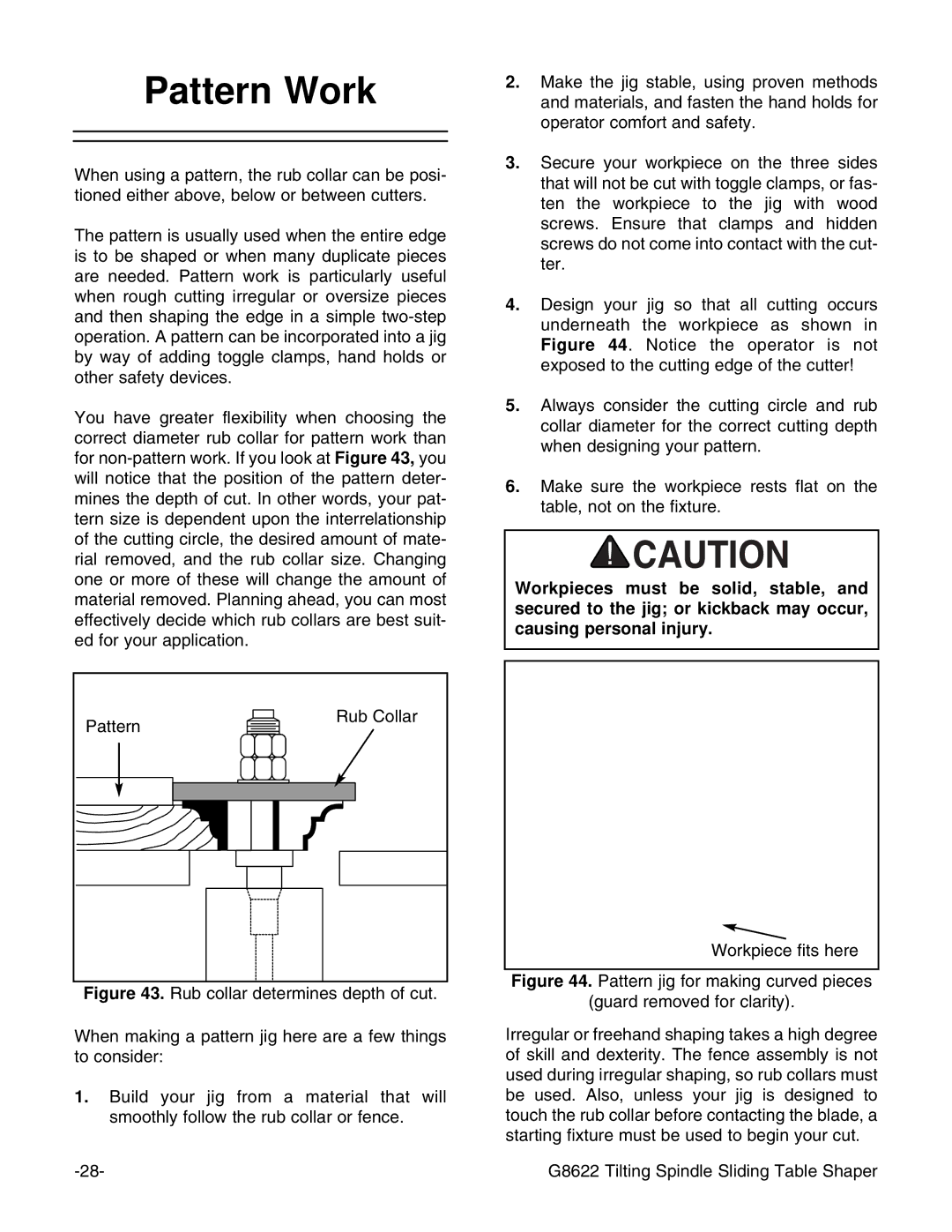
Pattern Work
When using a pattern, the rub collar can be posi- tioned either above, below or between cutters.
The pattern is usually used when the entire edge is to be shaped or when many duplicate pieces are needed. Pattern work is particularly useful when rough cutting irregular or oversize pieces and then shaping the edge in a simple
You have greater flexibility when choosing the correct diameter rub collar for pattern work than for
Pattern | Rub Collar |
|
Figure 43. Rub collar determines depth of cut.
When making a pattern jig here are a few things to consider:
1.Build your jig from a material that will smoothly follow the rub collar or fence.
2.Make the jig stable, using proven methods and materials, and fasten the hand holds for operator comfort and safety.
3.Secure your workpiece on the three sides that will not be cut with toggle clamps, or fas- ten the workpiece to the jig with wood screws. Ensure that clamps and hidden screws do not come into contact with the cut- ter.
4.Design your jig so that all cutting occurs underneath the workpiece as shown in Figure 44. Notice the operator is not exposed to the cutting edge of the cutter!
5.Always consider the cutting circle and rub collar diameter for the correct cutting depth when designing your pattern.
6.Make sure the workpiece rests flat on the table, not on the fixture.
Workpieces must be solid, stable, and secured to the jig; or kickback may occur, causing personal injury.
Workpiece fits here
